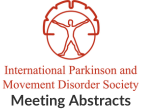Category: Ataxia
Objective: Case Report.
Background: Chiari malformation type 1 (CM1) is a congenital neurological disease with posterior fossa hypoplasia and the cerebellar tonsils being forced through the foramen magnum. Up to 45% of patients exhibit nystagmus. Downbeat nystagmus (DBN) is a spontaneous drift up of the eyes (slow phase), which is followed by a back downward saccade (quick phase), and it may occur in CM1.
Method: Case1: A 40-year-old man reported headache and progressive gait abnormality which started 2 years ago. There was no history of trauma, and family history was unremarkable. Neurological examination disclosed cerebellar ataxia associated with DBN. Brain MRI showed CM1 [figure1a].
Case2: A 47-year-old man presented with nystagmus and progressive gait ataxia for the last 2 years. Medical and family history were unremarkable. Examination showed cerebellar ataxia, DBN and bilateral pyramidal signs. MRI disclosed CM1 [figure1b]. Ataxia had a partial improvement after suboccipital craniectomy.
Case3: A 61-year-old woman complained of progressive gait impairment over the last 20 years. There was no family history of neurological disorders. She also had cerebellar ataxia, DBN and pyramidal signs. The MRI confirmed CM1 [figure1c].
Case4: A 49-year-old woman had a 10-year history of progressive vertigo, vertical binocular diplopia and abnormal gait. Neurological examination disclosed mild ataxia and DBN that manifested only on lateral and downgaze [figure1d].
Results: Cerebellar symptoms occur in up to 55% of CM1 cases, and may have a progressive or chronic course, such as in our patients. In our series of CM1 with progressive ataxia, the presence of DBN was a relevant neurological sign. Idiopathic DBN represents 40% of all cases of DBN. It is associated with cerebellar degeneration in 20% of all cases. Only 6% of CM1 cases present DBN. Conversely, 25% of DBN cases are related to CM1.
DBN is due to dysfunction of cerebello-vestibullar systems. The floccular cerebellar PC have a tonic inhibition upon the upward vestibulo-ocular reflex. Hence, lesions to the floccular PC may facilitate activation of upward eye movements, which results in vertical cerebellar nystagmus with spontaneous upward ocular drift, that is followed by a fast corrective downward movement.
Conclusion: Progressive ataxia associated with DBN may be included as a specific phenotype of CM1, mimicking a neurodegenerative disease.
To cite this abstract in AMA style:
B. Massuyama, F. Filho, J. Pedroso, O. Barsottini. Downbeat nystagmus and progressive ataxia mimicking a neurodegenerative disease: a specific phenotype of Chiari malformation [abstract]. Mov Disord. 2020; 35 (suppl 1). https://www.mdsabstracts.org/abstract/downbeat-nystagmus-and-progressive-ataxia-mimicking-a-neurodegenerative-disease-a-specific-phenotype-of-chiari-malformation/. Accessed July 4, 2025.« Back to MDS Virtual Congress 2020
MDS Abstracts - https://www.mdsabstracts.org/abstract/downbeat-nystagmus-and-progressive-ataxia-mimicking-a-neurodegenerative-disease-a-specific-phenotype-of-chiari-malformation/

